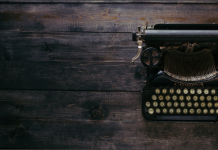Table of Contents
Physiology is the study of the function of body parts and the body as a whole. Some specializations within each of these sciences follow: Gross (macroscopic) anatomy is the study of body parts visible to the naked eye, such as the heart or bones. Let us consider the top 15 examination question and answer on anatomy and physiology for university students.
1.Question:
How does the cardiovascular system maintain homeostasis?
Answer :
The cardiovascular system maintains homeostasis through the circulation of blood and, therefore, oxygen and nutrients to organs and tissues. The body’s organs depend on the cardiovascular system to function.
For example, the cardiovascular system assists homeostasis in the central nervous system (brain and spinal cord) by providing a continuous supply of oxygen. Brain cells will begin to die after one minute if oxygen is cut off, so the cardiovascular system regulates oxygen for the brain cells, keeping them viable.
2.Question:
How does blood become deoxygenated?
Answer :
Oxygenated blood from the lungs moves to different parts of the body. In the body, the cells utilize the oxygen already present in them to break down glucose and to produce energy. This process generates carbon dioxide, so the cells are in constant need of oxygen. As the oxygenated blood reaches these tissues and cells, the oxygen from the hemoglobin of the blood diffuses to the cells, and the carbon dioxide from the cells diffuses into the blood. Thus, the blood becomes deoxygenated.
3.Question:
What is another name for the large intestine?
Answer :
The large intestine is also known as the colon. This organ is nearly six feet long and 2.5 inches in diameter. The large intestine/colon includes the following components: cecum, ascending colon, traverse colon, descending colon, sigmoid colon, rectum, and anus. This digestive tract component has four layers: the innermost layer, surrounding mucosa, the muscular layer, and the serosa layer, which is the outermost layer.
This part of the digestive tract is the final section where water and vitamins are absorbed. This is also where digested food is developed into feces. As waste moves through the large intestine/colon, excess liquid and salt are removed.
4.Question:
What are the five body functions that monitor homeostasis?
Answer :
The five body functions that monitor homeostasis are temperature, glucose, blood pressure, toxins, and pH. Any increase in heart rate, breathing or sweating can alter the state of equilibrium.
5.Question:
What is an osteophyte?
Answer :
Osteophytes are bone spurs that develop as a result of a loss of cartilage at joints. They come up out of the bone at the joint and are the bone’s way of trying to protect itself. The function of osteophytes is to stabilize the joint and try to prevent any further damage from occurring to the bone underneath. Osteophytes are commonly associated with diseases such as osteoarthritis, which cause cartilage to crack and wear away, exposing bones at joints and causing the bones to rub directly against one another. This results in damage to the bone itself, which is why the bone produces osteophytes.
6.Question:
Does a pig have an appendix?
Answer :
No, pigs do not have an appendix. In fact, there are very few species besides humans that do. Rabbits and several primates do possess this organ. In humans, the appendix is known to occasionally become infected. When this occurs, it usually must be removed in a procedure called an appendectomy.
7.Question:
White blood cells engulf bacteria through what process?
Answer :
When white blood cells encounter invaders such as bacteria, they engulf and destroy them through a process called phagocytosis. In this process, the white blood cell completely surrounds the bacteria. It then releases enzymes that digest the bacteria, destroying it. In essence, the white blood cell eats the bacteria. This is one way in which your body is protected.
8.Question:
What contribution to modern science was made by Andreas Vesalius?
Answer :
Andreas Vesalius advanced the understanding of anatomy or the study of the human body. He created the first anatomy textbook, De humani corporis fabrica libri septem (The Seven Books on the Structure of the Human Body), so that medical students could better conduct research. He also performed dissections, meaning that he cut open dead bodies to study them, to create the most accurate pictures of the human body possible.
9.Question:
What are the two main divisions of the nervous system?
Answer :
The nervous system consists of two major parts: the central nervous system and the peripheral nervous system. The central nervous system is made up of your brain and spinal cord. This is closely connected to the peripheral nervous system, which includes all of the nerves that extend to every part of your body. When stimuli affect a nerve, the signal is sent through that nerve to the spinal cord and up to the brain. The brain processes this information and then sends a signal back the other way.
10.Question:
Why do capillaries need to be thin-walled?
Answer :
Capillaries need to be thin-walled because their main job is the gas exchange. Throughout most of the body, they bring oxygen to the tissues and remove carbon dioxide. Around the lungs, they release carbon dioxide, so it can be exhaled, and they take in oxygen to bring to the rest of the body. If the capillaries did not have thin walls, the gases could not diffuse through, which would make this important job very difficult.
11.Question:
Why type of exercise contributes most to building strong bones?
Answer :
The best exercises for building bone strength are those that are considered weight-bearing, in which you work against gravity. These exercises are as follows: walking/hiking, any type of running/jogging, weight training, and tennis. Everyday weight-bearing activities such as climbing stairs or mowing the lawn will also help to build strong bones. Entertainment activities, such as dancing and ice skating, are also considered weight-bearing exercise and are great for strengthening bones.
12.Question:
The human immune system fights infection by releasing
Answer :
The human immune system fights infection by releasing white blood cells to attack the infection. Most cells in blood are red blood cells, which provide oxygen and nutrients throughout the body. Only a few are white blood cells, which are programmed to specifically seek out foreign bodies, like germs, and destroy them.
While white blood cells do a good enough job to keep us mostly healthy throughout our lives, some diseases attack these white blood cells and our immune system itself. For example, the human immunodeficiency virus, or HIV, attacks our bodies in a way that makes it harder for certain white blood cells to fight off other infections.
13.Question:
What are the two primary functions of the kidney?
Answer :
As part of the excretory system, our two kidneys help rid the body of substances it does not need. The kidneys do this by performing two primary functions: filtering the blood and producing urine.
By filtering the blood, our kidneys remove liquid waste products (the things our bodies don’t need) from it. This keeps the blood clean and usable for the rest of the body.
By producing urine, our kidneys make a way for liquid waste to leave the body.
Even though the kidneys are primarily responsible for eliminating unnecessary things from our bodies, they do some other important work as well. They help to regulate blood pressure and maintain pH and electrolyte balance. In addition, they produce hormones that help with red blood cell production.
14.Question:
Why is the ability to culture stem cells important?
Answer :
The ability to culture stem cells has important implications, as they contain all of the genetic material needed for the formation of every cell type within the body. As a result, with the ability to culture stem cells comes the ability to culture any type of cells, such as skin cells, neurons, and cardiac tissue. This has important applications in medicine, specifically regarding cell regeneration.
15.Question:
What is the organ system that moves blood around your body?
Answer :
If you put your hand on the left side of your chest, you will undoubtedly feel the strong beat of your heart. Your heart is the pump that constantly moves your blood through your body. This system that includes your heart, blood vessels and lymphatics is known as the circulatory system. Every time your heart beats, it pumps blood through your vessels to all parts of your body. Blood circulates continuously, leaving the heart through vessels called arteries and returning in vessels called veins.





